THE DEADLIFT IS NOT just a move reserved for mammoth powerlifters and bodybuilders. Go to any commercial gym and you’ll find athletes of all shapes, sizes, and ages performing the exercise as part of their everyday fitness routine. Pulling has become as much a part of the muscle mainstream as any other exercise.
The deadlift’s complexity goes beyond just pulling large amounts of weight off the floor. When it comes to benefits that transfer from the weight room to everyday life, the deadlift is in a category all its own. Whether you’re picking up a bag of groceries or your kids, the process of hinging, bending, and lifting all come back to deadlifts.
Most people in the gym aren’t just working toward a new 1RM either. Deadlifts are one of the elite full-body exercises that target a whole host of muscles—from your hamstrings, glutes, core, even back and shoulders and grip.
No matter your fitness goal, the deadlift is a training must—but you might find that the conventional barbell version of the exercise isn’t the best choice for your anatomy or your goals. Switching things up with a variety of deadlift alternatives can be a great way to target various muscles groups from different angles. Some styles allow you to still lift heavy while reducing some range of motion, while others emphasize different parts of the movement pattern.
No matter your goals, there’s a deadlift style that can best suit your needs.
Benefits of Deadlifts
- Full-body exercise that hits nearly every major muscle group.
- The deadlift movement pattern carries over to many everyday life functions.
- Works on grip strength
You’ll struggle to find an exercise more adaptive to everyday life than a deadlift. We’re constantly picking up things like packages from the floor, not to mention the tons of grocery bags on a regular basis. Deadlifts allow us to work and improve our hip hinge technique. And because of the variety of exercises you can perform, you’re hitting the hamstrings and glute muscles from a variety of contexts—from traditional to unilateral movements, using a variety of deadlift variations will allow you to switch up the stimulus and introduce novelty to your training plan.
Deadlift Mistakes to Avoid
While pulling a new PR can be one of the most fulfilling experiences in the gym, sacrificing pure poundage for good form can set you up for injury. While you may be able to get away with sloppy technique on some exercises with minimal effects, you can set yourself up for injury sooner than later with poor deadlift form. Avoid that by focusing on these elements, which are applicable for any variation:
Not Bracing Your Core
For maximum deadlift benefits, you need your lower back, obliques, and abdominal muscles working as a team to keep your spine stabilized. This becomes more critical as you increase the weight.
Dropping Your Shoulders Lower Than Your Hips
Your lower back should never be doing the majority of your deadlift work. If that’s the case, injury becomes inevitable. Instead, focus on making your glutes and hamstrings the prime movers throughout each rep. Always remember to keep your hips lower than your shoulders with each deadlift rep.
Not Engaging Your Lats
Even though this is primarily a lower-body exercise, your upper body is still providing plenty of support throughout your deadlift. Focus on keeping both your lats and shoulder blades nice and tight during setup and throughout the move.
The Best Deadlift Variations
Arguably the most primal move known to most lifters: You bend down, pick up a weight, and then put it down. Seems simple, but proper technique makes the difference between continuous growth (as well as 1RM gains) and an injury and lost training time.
For this multi-joint move, the goal is to lift heavy while keeping your back and spine safe. Because you’re hitting a number of muscle groups—from your glutes, hamstrings and the rest of your posterior chain—you can add this deadlift gold standard as part of your leg day or even as your heavy lift on back day.
How to Do It:
- Standing with your feet about shoulder-width apart, place your feet under the bar as close as possible. Your shins should be slightly touching the bar.
- Pushing your butt back as you hinge at the waist, bend down and grab the bar using an overhand grip, with your hands just outside your legs.
- With your hips dipped lower than your shoulders, squeeze your shoulder blades together—setting your lats while at the same time also engaging your core. Keep your neck in a neutral (and try and avoid looking up).
- Push your feet through the floor and pull the weight up, keeping the bar close to your body. It’s okay if the bar scrapes against your shins. Squeeze your glutes at the top of the lift, but try and avoid leaning too far back at the top.
- Perform each rep in a slow, controlled manner. Think of each rep as the start of your set as you set up. Aim for anywhere from six to eight reps per set to start.
When it comes to working the hamstrings, the Romanian deadlift remains one of the main players for building size and strength. The move has its own subset of variations as you’ll learn later, but with this one, you don’t necessarily have to go as heavy as possible, unlike the traditional deadlift. The goal here is to work on a slow controlled movement during the eccentric (lowering) phase.
How to Do It:
- With your feet about shoulder-width apart, grab a barbell from a squat rack with the pins set below the knees or whatever feels comfortable for you.
- Holding the barbell from the upright position, keep the barbell close to your torso, with your shoulders back, core tight, and glutes squeezed.
- Begin “pushing” your butt back as far as possible as you begin slowly lowering your torso, about two to three seconds. The focus of the Romanian deadlift is supposed to be on this eccentric contraction. Lower too fast and you’ll greatly reduce the hamstring-hitting benefits.
- Remember not to force your range of motion to go more than it’s capable of. Over time and practice, you should begin seeing an increase in your ROM.
- Pause at the bottom, then return to the starting position. up, slightly quicker than the lowering phase.
- Perform for about eight to 10 reps each set.
Although this variation will work your hamstrings and glutes, the greater challenge with the single-leg deadlift is maintaining balance and stability. It’s a great move for athletes looking to improve their balance and coordination.
How to Do It:
- Grab a dumbbell or kettlebell, and hold at arm’s length in front of your working-side thigh.
- Keeping your shoulder blades tight, hinge at your hips and lower your torso until it’s almost parallel to the floor (or as far as your ROM will allow for).
- While lowering, lift your back foot slightly off the ground (doing this will allow you to add more weight while still challenging your balance). Begin lowering the weight down toward the floor, keeping the back leg in line with your torso.
- Lower as far as your range of motion will allow you. A good stopping point is when you begin feeling your hamstrings begin to tighten. Over time your ROM should increase.
If you ever had to pick up a bag of groceries from your doorstep or the trunk of your car, you’ve used what you learned from the kettlebell deadlift. It’s a small move that over time sets you up for heavier deadlift variations. But don’t sell this one short: Besides being a great functional exercise for everyday life, the kettlebell deadlift works a ton of muscles with an accessible implement for all kinds of lifters.
How to do It:
- Start standing slightly behind your kettlebell, feet slightly wider than shoulder width with your core tight.
- Push your butt back and hinge forward at the waist, lowering your torso and grasping the kettlebell firmly with both hands.
- Turn the pits of your elbows forward, powering up your lats and mid-back muscles. Maintain this tension.
- Tighten your glutes and hamstrings, driving your butt a few inches lower. Maintain this tension.
- Exhale and lift the kettlebell straight up.
- Squeeze your glutes and shoulder blades. Slowly lower it back to the ground. That’s one rep. Do three sets of eight to 10 reps.
Once you try pulling from this wider stance, you’ll realize why sumo deadlifts are popular among heavy lifters (and you might wish you had tried them sooner).
Of course you’ll be making plenty of gains—many powerlifters commonly use the sumo deadlift as it decreases their range of motion, allowing them to pull heavier weights. It’s also great for those of us with long legs to help shorten the pull. Oh, and it’s a wonderful addition for building stronger glutes.
How to Do It:
- With your feet much wider than shoulder width, push your butt back, reach down and grab the barbell, then pull your hips down to the bar.
- Use a more narrow grip than your standard deadlift. Turn the pits of your elbows forward to engage your lats.
- Keeping your chest up, and shoulders tight, and your neck in a neutral position, look straight forward as you begin to pull the bar. It’s important to maintain tension throughout the entire setup, no matter the weight used.
- Make sure your hips are lower than your shoulders with each rep, and place the emphasis on glute and hamstring tension.
- Focus on keeping the bar close to your body the entire time—don’t drift forward—as you lift to thigh level. Also focus on taking the weight onto your heels during the process.
- Lower. Reset, then repeat. Go for about four sets of six to eight reps.
What separates the trap bar deadlift from its peers—including the conventional straight-bar deadlift—is that the trap bar shifts your grip from the front of your body to the sides, which is a much more natural way to lift a heavy load off the floor. Outside the gym, most or us have been accustomed to carrying loads at our sides (again, groceries), so it make sense that you can train deadlifts in the same manner.
With the trap bar’s hexagonal shape and neutral grip handles in the center, you’re able to grab the load at a more natural angle—and still be able to lift heavy like with a straight bar.
How to Do It:
- Position yourself inside the trap bar, with your shins aligned with (or just in front of) the center of the bar).
- Push your butt back as far as possible, bend your knees, and reach down to grip the handles. Grip as tightly as possible.
- Keep your head in a neutral position, keeping your gazed fixed at something in front of you. Squeeze your shoulder blades to create tension, and turn the pits of your elbows forward, facing out.
- Make sure your hips are lower than your shoulders, then prepare to initiate the lift.
- Push your feet through the floor to stand straight up, squeezing your glutes at the top.
- To finish the rep, push your glutes back as far as you can, then bend your knees to set the weight down.
- Start with four sets of eight to 10 reps, and as you improve, go for three to five reps per set.
Rack pulls give you the best of both worlds: You can move ridiculously heavy weight while avoiding the hardest part of the conventional deadlift.
Instead of starting from the floor, you’re pulling from a higher starting point, usually by placing the bar on the pins of a power rack or platform. You shorten your deadlift range of motion. This is a great alternative for those with mobility issues or those who struggle pulling from the floor.
How to Do It:
- Set up with the loaded barbell elevated from the floor—either setting up pins on a power rack at a height that’s comfortable for you.
- Standing with your feet at about shoulder-width apart, keep your shins in front of the bar as close as possible.
- Lower down to grab the bar using an overhand grip (you can use straps as the loads increase), keeping your core and shoulder blades tight, begin pushing your glutes back.
- Turning the pits of your elbows forward to create tension between your shoulders, begin standing straight up as you pull the bar from the rack. Hold briefly, then return to start. stand straight up to pull the bar off the rack or platform. Hold that tension briefly, then lower back down.
- Keep the reps low, normally within the three- to five-rep range.
The stiff-leg deadlift was a staple during bodybuilding’s golden era when Arnold Schwarzenegger would include in his leg day repertoire.
You’ll want to go light with this movement—no 1RMs necessary here. It’s best used as a replacement exercise when your equipment options are limited.
How to Do It:
- Stand in front of the barbell with your feet at shoulder-width apart. The bar should be close to your body, almost touching your shins, with your feet under the bar.
- Push your butt back, then lower your torso to reach down and grab the bar. Your knees can bend, but keep them as straight as you can.
- With your shoulder blades slightly squeezed, and a slight, natural bend in the knees, brace through your abs as you begin to pull the bar from the floor. You don’t need to be as aggressive in the pull as you would with the conventional deadlift (but don’t pull it softly either).
- From here, think of the move as a Romanian deadlift—you’re going to push your butt back as you lower the weight down to the floor, taking two to three seconds on the descent. Pause, then lift the bar back up.
- Aim for three to four sets of eight to 10 reps.
The dumbbell Romanian deadlift is a variation that just about everyone can (and should) include in their workouts, from beginners to seasoned athletes. This exercise will allow you to build strength—particularly in your hamstrings, glutes, core, mid-back, even forearms—while being a safer option to avoid injury (you don’t have to pull from the ground, and you’re limited to lower loads that with a barbell). You’ll also be able to enhance your technique which will carry over to other forms of deadlifts. Dumbbells allow the positioning to be a little more adjustable, so beginners can have a better opportunity to work on their hinge movements by focusing on pushing your butt back and mastering the movement pattern.
How to Do It:
- Standing with you feet about shoulder-width apart, grab a pair of dumbbells from a bench or box.
- Keep the dumbbells close to your sides, with your shoulders back, your core tight, and glutes squeezed.
- Begin “pushing” your butt back as far as possible and lower your torso. Think about taking two seconds with the lowering phase. The goal is to get to about a 45-degree angle, depending on your personal mobility limits. Don’t forget to keep the dumbbells close to your shins—don’t let them hang too far forward.
- Pause at the bottom, then stand back up, slightly quicker than the lowering phase.
- Three to four sets of eight to 10 reps work best here.
Jeff Tomko is a freelance fitness writer who has written for Muscle and Fitness, Men’s Fitness, and Men’s Health.
Brett Williams, a fitness editor at Men’s Health, is a NASM-CPT certified trainer and former pro football player and tech reporter who splits his workout time between strength and conditioning training, martial arts, and running. You can find his work elsewhere at Mashable, Thrillist, and other outlets.



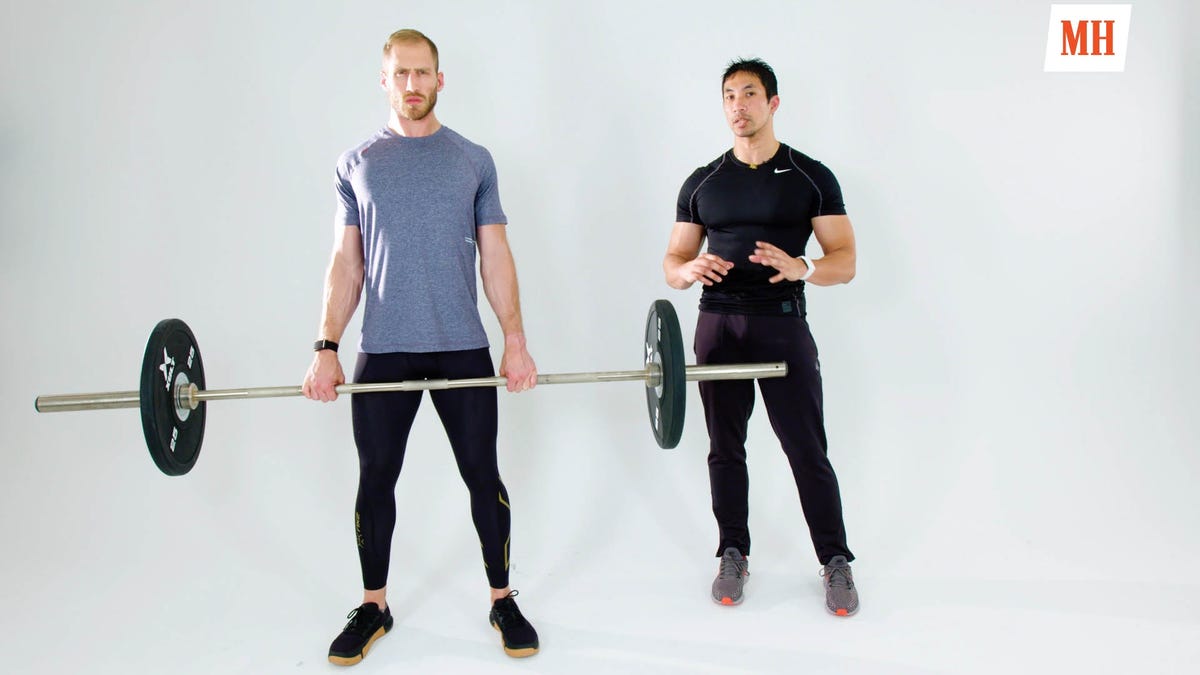
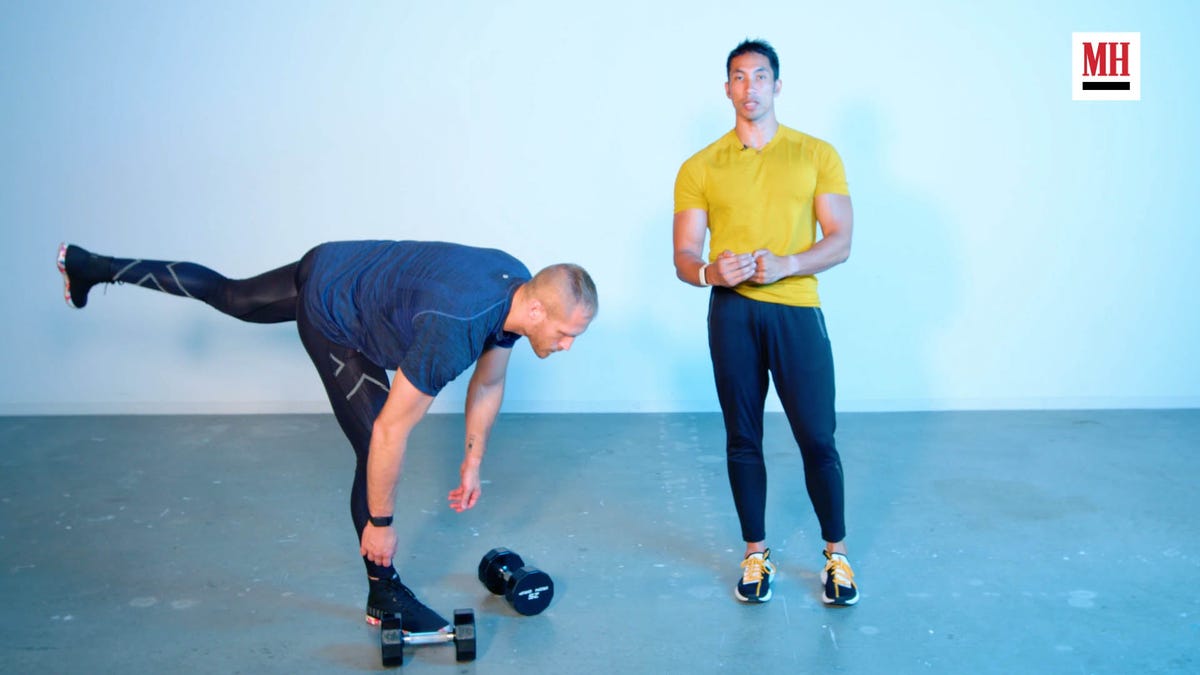
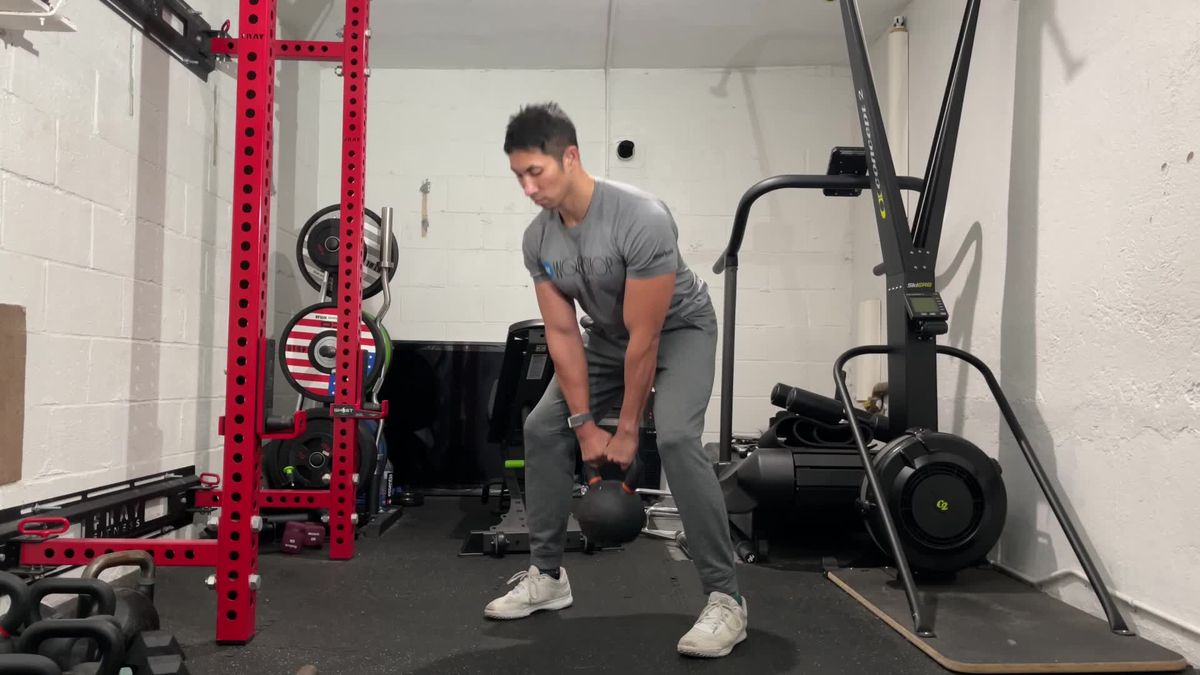
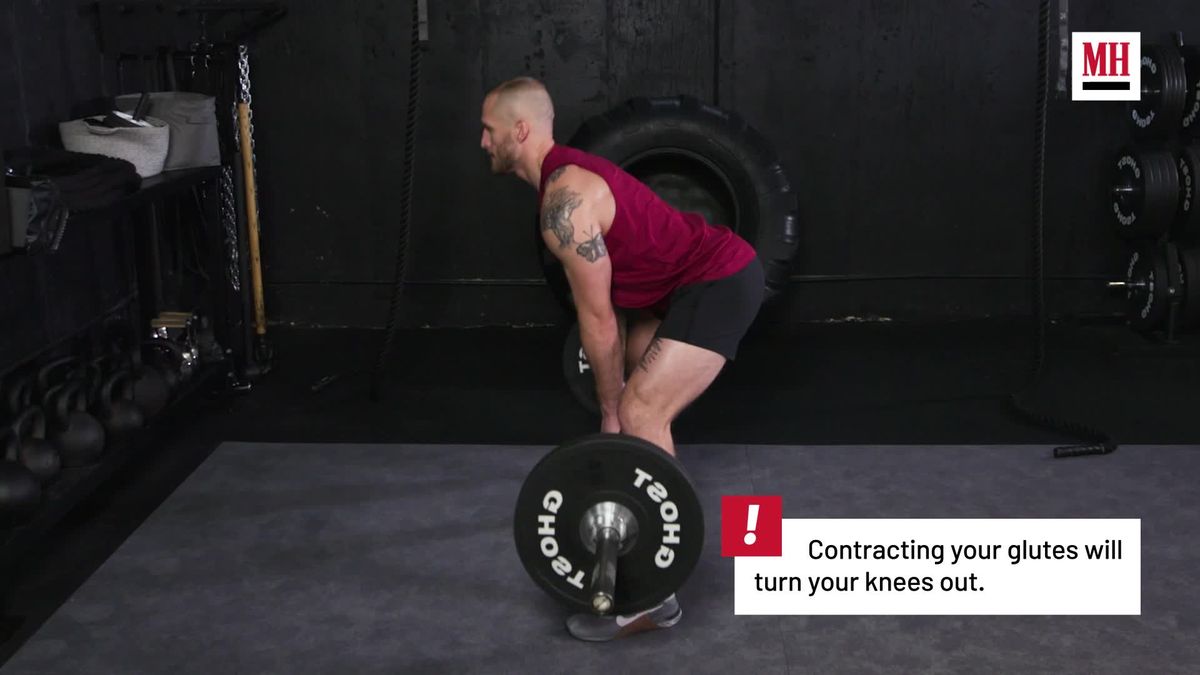
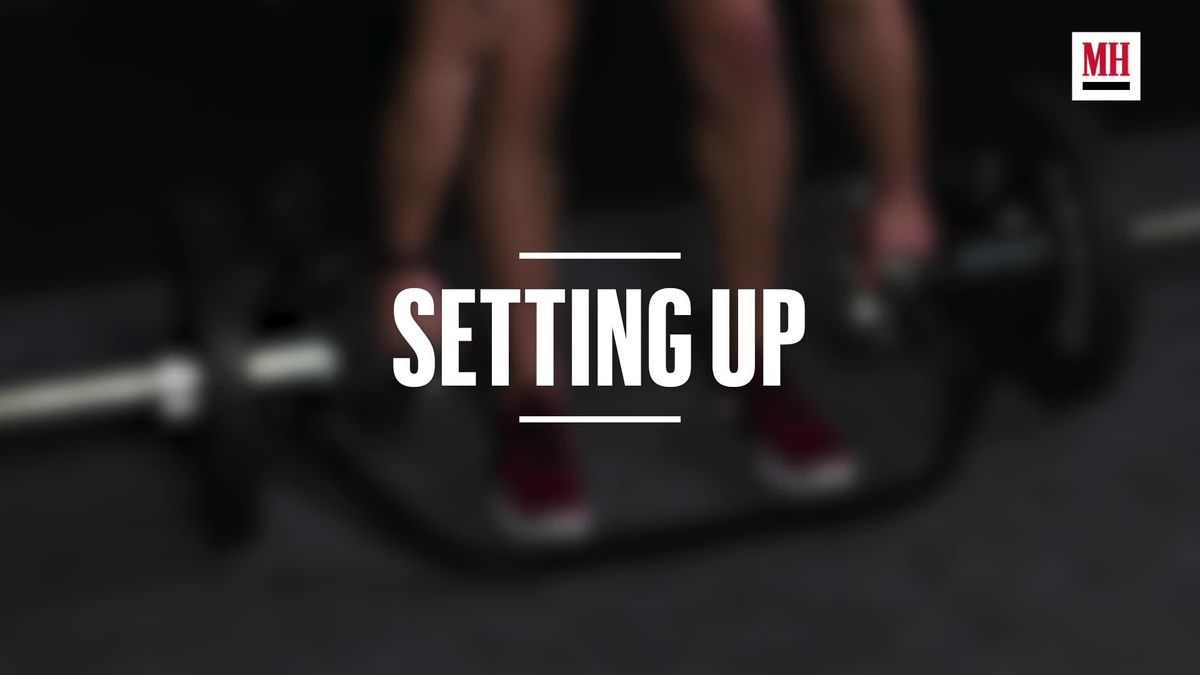
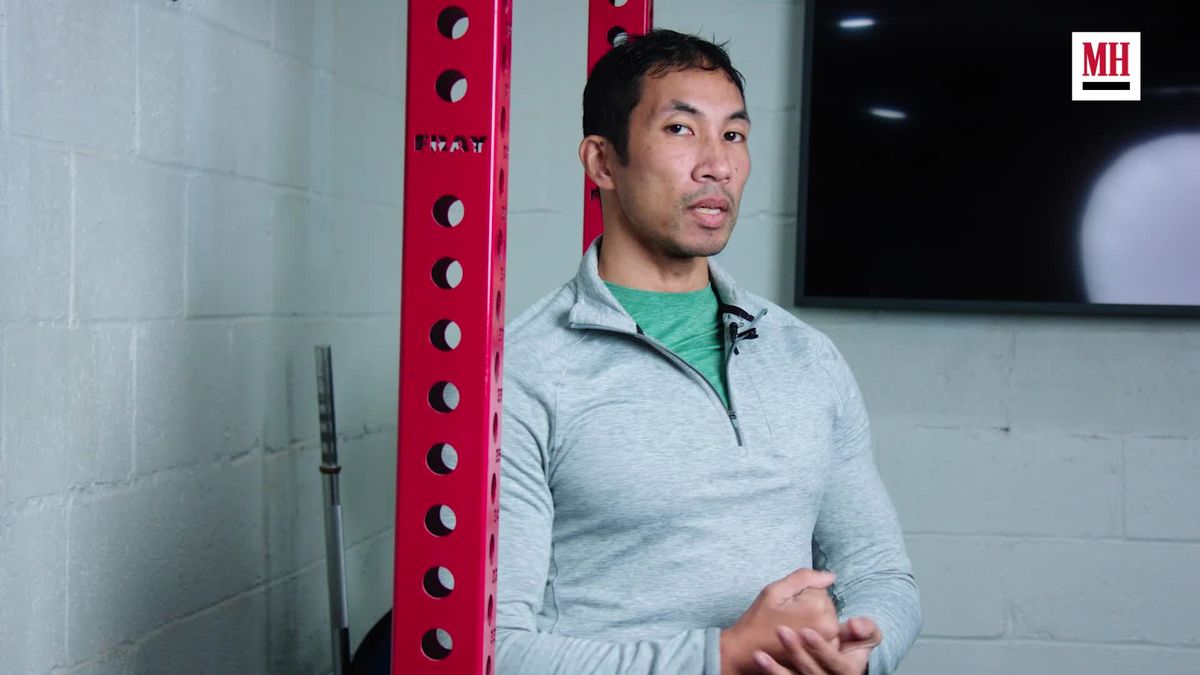

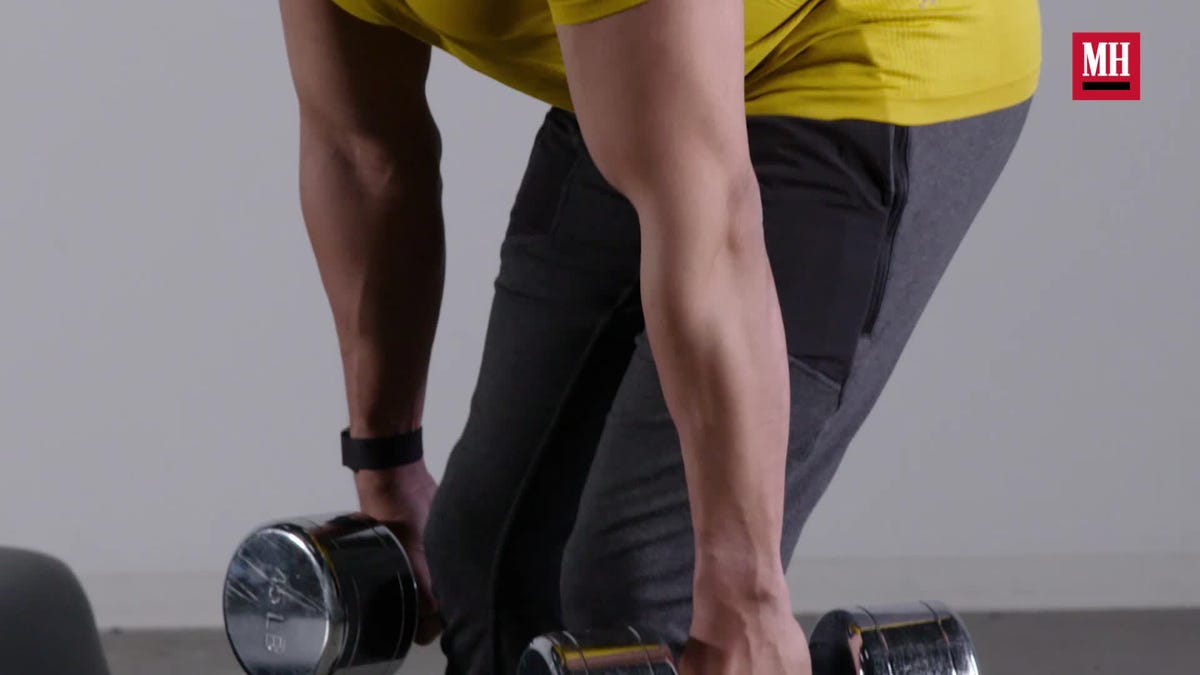
Comments are closed.